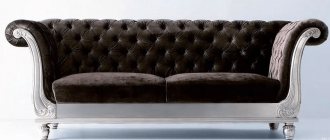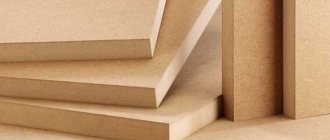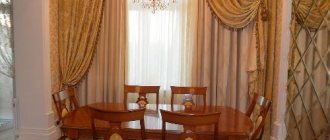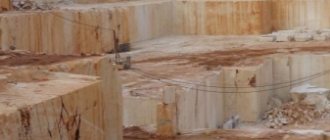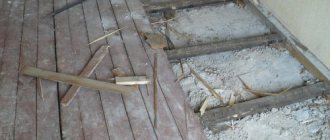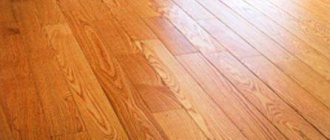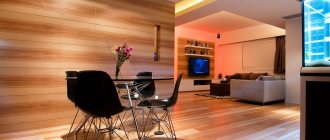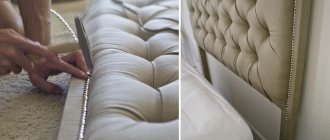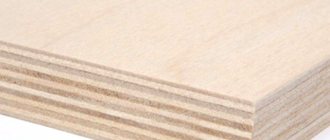What is eco leather
Work on the creation of this material began back in 1963, when American scientists were tasked with creating an artificial material whose characteristics were no different from natural ones and at the same time should be cheaper.
The production of this material is based on the principle of manufacturing leatherette. However, environmentally friendly raw materials are used. Eco-leather is based on cotton fabric, which is coated with polyurethane. Thanks to this, eco-leather does not contain any harmful components or substances with an unpleasant odor, which are characteristic of other leather substitutes.
Video: leather, eco-leather, leatherette
Video comparison of three materials: leather, eco-leather and artificial leather, their tests and properties.
See similar articles
- Crepe is a light and durable rough textured fabric.
- Diving - close-fitting viscose fabric
- Polyester is a synthetic fabric with unique properties
- Tapestry - thick fabric with patterns for the interior
- Corduroy is a durable textured fabric with a soft texture.
- Footer - soft cotton fabric for children's clothing
If you liked the article, share it with your friends!
Features and benefits of eco-leather
Among the main advantages of this material are:
- Externally, eco-leather is no different from natural leather. In some cases, to distinguish them, you need to look at the reverse side.
- The use of the material has saved thousands of animal lives.
- Due to the fact that the production of eco-leather allows fabric to be made of any size, it has become very popular in the production of furniture and other large-sized products that require large, solid pieces of leather fabric.
- The polyurethane used to make the material has a large number of pores, which allows the eco-leather to “breathe”, allowing air to pass freely.
- During production, fabric of any color can be made.
- Has high frost resistance.
- The material is resistant to high temperatures and sunlight. Therefore, products made from it do not deteriorate or fade, even when exposed to the open sun.
- Eco-leather is quite pliable, elastic and easy to use. It is easy to cut, cut and sew from it.
- The material is practical and durable.
- Eco-leather is resistant to abrasion and other mechanical damage.
- Does not contain allergens and does not cause negative reactions from the body.
- Relatively low price, in contrast to natural material.
What does eco-leather mean for manufacturers of goods made from it? Thanks to its use, it is possible to make high-quality products that will have all the properties of genuine leather and at the same time will be absolutely safe for humans. Today the material is used for the production of clothing, shoes, haberdashery, furniture, car upholstery, etc.
Ecology and artificial leather: about eco-leather
The prefix “eco” is now very popular and, as it were, rehabilitates any thing and process in the eyes of the consumer.
In popularity and justifying power, “eco” is perhaps second only to the word “vegan.” Now add the prefix “eco” to the seemingly harmful word “waste” and voila! - you no longer have waste, but almost medicine!
I would suggest, as is the case with some words, that the use of the prefix “eco” be certified for anything.
For example, when preparing this material, I came across the fact that the term “eco-leather” is happily used by manufacturers of a wide variety of materials.
This is the name for a material consisting partly of recycled leather and its waste (usually 20 percent). Eco-leather is also called natural leather, the tanning of which did not use harmful substances (chrome, formaldehyde, etc.), but plant extracts.
Moreover, in 2013, Richard Wool, a professor of chemistry and biomolecular engineering at the University of Delaware, announced that he was working on creating eco-leather - that is, a material with properties similar to leather, but created from plant fibers and oils.
On the Russian-language Internet, eco-leather is most often understood as an artificial material that differs from the leatherette we are used to. Since this is the type of eco-leather we will be talking about, let’s figure out what the fundamental difference is.
Let's start with the fact that artificial leather is a man-made substitute for natural leather.
The first prototype of such a material is considered to be latex (a water dispersion) of natural rubber, into which the natives of South America dipped their feet, thus forming something like shoes on their feet. It is rubber, first obtained on the basis of natural and then synthetic rubbers, that are the first artificial materials to replace natural leather.
And the first products made from leather-like artificial materials can be considered rubber shoes with a top made of fabric impregnated with a rubber solution. By the end of the 19th century, there were already several factories in Russia producing various artificial materials, but large-scale development of artificial leather production began in the 30s of the 20th century.
Gradually, in addition to rubbers, more and more new polymers are involved in its production, such as polyvinyl chloride (PVC), polyolefins, polyamides (PA), etc.
What is modern artificial leather?
This is a material created by applying a polymer to a fiber base. The woven base for soft artificial leather can be a variety of fabrics, knitwear, paper and various non-woven materials.
The polymers applied to the woven base are film-forming materials, rubber adhesives or latexes (shoe tarpaulin, elastomer leather), polyvinyl chloride pastes and plastic compounds (vinyl leather), polyamides (amidis leather), nitrocellulose primers (nitro artificial leather), polyester urethanes, etc.
The most common polymer for soft artificial leather is polyvinyl chloride. To impart elasticity, additives are added to it - plasticizers (various phthalic acid esters) - up to 60% of the mass fraction.
These additives are considered not very environmentally friendly because they can leach, they can evaporate into the air, they can be absorbed by microbes (this is why PVC sometimes contains biostabilizers, usually heavy metals); they can move into other materials through direct contact ("migration" occurs).
In any case, PVC additives pollute the environment on a global scale. The topic of the level of environmental pollution during the production process, as well as PVC waste, is generally a very broad topic, and I will omit it.
The creation of eco-leather does not involve polyvinyl chloride, but polyurethane, which allegedly does not emit harmful substances during operation, since no hazardous substances are added to it.
According to manufacturers, eco-leather has high hypoallergenic properties: the material does not cause irritation on the skin; unlike polyvinyl chloride, it has no odor.
In addition, the structure of the material has a high coefficient of breathability, so it is hygroscopic and does not create a greenhouse effect. Eco-leather does not overheat in the sun and does not harden in the cold; it is always pleasant and warm to the touch.
I had the opportunity to meet Sandra Bondare, brand ambassador for Coo Culte
in Belarus, whose assortment includes many items made from eco-leather.
I asked Sandra to talk about this material and about the experience of the Coo Culte
with eco leather.
Sandra:
“The European brand Coo Culte has existed since 2008, and for 3 years now we have been actively using eco-leather from Italy in the production of our clothing.
We use eco-leather to make everyday clothes, for example, leggings, tops, skirts, jackets, coats, and also actively use eco-leather to create cocktail and evening dresses and outfits.”
Bondare:
“The composition of our fabric (eco-leather) is 65% polyester and 35% polyurethane.
The eco-leather we use is made of several layers: the fabric base (polyester) is coated with polyurethane and when coated, through micropores are formed that penetrate the film, resulting in the fabric being highly breathable. In Russian there is a term for this fabric “PU leather”.
Sandra Bondare:
“Eco leather is a modern hypoallergenic material, since thanks to micropores it allows air to pass through, that is, it “breathes” like fabric made from natural fibers. Eco-leather is very soft to the touch and has good breathability. Eco-leather is wear-resistant, and even in the cold, a product made from this material will remain soft.
In our opinion, eco-leather is much better to wear than genuine leather, since eco-leather products can be worn both in summer and winter, they are very comfortable, easy to care for (can be washed in a washing machine) and things retain their original shape. Thanks to modern technologies and the invention of materials such as eco-leather, there is no longer any need to kill animals for leather.
The use of eco-leather is fully consistent with the concept of our brand, as a result of which we can offer customers clothes that cannot be confused with other brands.”
VELVET: Yulia Petrunenko
Comparison with natural leather
Some people are skeptical about various artificial materials. So what are their similarities and differences?
- Both fabrics are pleasant to the touch. But, if you sit on furniture covered with natural material, then exposed parts of the body may sweat, which is not observed when touching eco-leather.
- For some, natural material is an allergen, while eco-leather is completely hypoallergenic and safe.
- The air permeability of artificial material is several times higher than that of natural material, for the coating of which acrylic emulsions are often used.
Negative reviews
Is there another alternative for such a shabby sofa other than reupholstery?? We have the same problem - a new sofa, we are still paying a loan for it, and our cats kept piercing it with their claws. It’s a shame to throw it away ===, we’re still paying for it. reupholstery===probably more expensive (we live in Germany),
Is there any method for covering our leather sofa? If there is such a way, but you don’t want to give away secrets, please write me a private message. Otherwise, it’s a shame in front of the guests, it’s a pity to throw it away, we haven’t saved up for a new one yet.
The handle does not rub off, in 3 years our sofa has turned into rubbish, where they sit, the top layer has become thinner, cracked and is simply removed with a thin film, in short, the sofa is full of holes. At the same time, there is a cheap sofa from Ikea made of faux leather, but nothing has been done to it. But I didn’t really like the material, it wasn’t comfortable to sit on, they took it only for practical reasons that if two children got it dirty, it could be wiped off. I really liked the leather-like fabric from the March 8 factory, it is anti-vandal, you can wash it, in appearance it looks like leather, but it feels very pleasant, there is also just anti-vandal fabric, but the price tag is of course quite high
The quality of eco-leather varies, we were unlucky, the sofa began to peel off after a year and a half, and by the age of three it was simply crumbling into pieces.
Pros:
Looks great, still new (about a year old)
Minuses:
High price (80 rubles) Disgusting quality of upholstery.
I have a bag. To say that I am disappointed is to say nothing at all(.
If you buy a sofa costing less than RUR 80,000. and the seller tells you that the upholstery material is Eco leather! Feel free to hit him in the face, it's a lie! All furniture in domestic stores, regardless of whether it costs 10,000 rubles. it costs or 70,000, upholstered with the cheapest artificial leather, mainly TERRA or ORIGON (remember these names), which begins to peel off after 1.5-2 years of use.
wear and tear began to appear after 2 years, and after 3.5 years the driver’s seat, the seat itself was worn out by 50%, and not only was it worn out, the material began to come apart, the backrest became worn in some places. Quality, for this price is zero. I bought it in the summer of 2015 for 6k + installation.
trips are mainly home-work, without traffic jams, approximately 12 thousand km per year.
Polyurethane, which is of very high quality and resistant to chemicals, is a very expensive imported material.
In the Russian Federation they won’t offer you this, but take a sofa for 200 thousand. Of such material, only an ardent defender of animals would become. The production of furniture and clothing mainly uses cheap polyurethane.
I’ve come across it myself more than once: if it’s in a mass, it becomes glassy from old age or breaks at the bends, and if it’s a sponge or foam rubber, it either dries and crumbles (from experience - from contact with ethereal solutions, perfumes, for example), or turns into a sticky mass. For example, I recently pulled out a gasket from the battery compartment of the remote control. ***** still the same.
Eco-leather can only be good in handbags. And it’s not clear what’s mixed in there.
And for furniture and clothing - complete g. I haven’t seen a single good review. 2-3 years (or even less) and goodbye upholstery.
Well, if you still decide to buy eco-leather, I can advise you: never choose eco-leather that is delicate and thin to the touch. It should be a little rough, i.e. with a thick base (Caution! Easily confused with leatherette).
In short, to hell with it))
I don’t know about eco-leather, but the “fuzzies” on the seats are mostly installed by owners of cars with leather interiors. In winter it’s cold (until the heating heats up, your back will stiffen), in summer the sun gets so hot that it’s impossible to set, and during a long drive you sweat so much that your clothes stick to your skin. All these statements like: “I turn on the heated seats, while I sweep away the snow, they will heat up” are show-offs and bullshit.
Z.Y. I write this because I myself use sheepskin in both winter and summer.
especially valuable skin from the butt of a killed dermantine?
Of course not. eco leather is a leather substitute.
they are of course different. but the essence is the same - chemistry.
Have you been banned from Yandex? Eco-leather is a leather substitute, although more advanced than analogues used 10-15 years ago, but it is a leather substitute, not leather, as unscrupulous sellers often try to convince. Despite the external similarity and to the touch, this material is based on a fabric “backing base”, on which a polyurethane mixture-coating is applied. Without going into details about the properties of such a material, just from our own experience, we report the following:
How to care for the material
In order for an eco-leather product to serve you as long as possible, you need to properly care for it:
- To clean dirt from its surface, it is better to choose soft fabrics. If the product has stains that are difficult to remove, they can be treated with an alcohol solution, for which alcohol is diluted with water in a ratio of 1 to 1.
- An eco-leather product will last longer if it is regularly treated with water-repellent agents.
- To clean products, it is prohibited to use products that contain chlorine or abrasive particles.
- After cleaning the eco-leather, wipe it dry with a soft cloth.
Products made from eco-leather have an attractive appearance, are practical and at the same time cost much less than their analogues made from natural material.
What is eco leather? Composition and its application
Eco-leather is an artificially produced material. It is created by applying a polyurethane film to a fabric base, usually cotton, but there are other options. The thickness of the film may vary, but it is this that affects the quality and performance characteristics of the item. A thick coating ensures long-lasting wear of the product, but it will feel harder to the touch. In the production of eco-leather, no plasticizers are used, which is why it received the prefix “eco” in its name.
When making eco-leather, the fabric and polyurethane layers are subjected to hard embossing, which is why the final result appears in a pattern identical to that of natural leather. It can be distinguished from the original only by looking at the back of the product.
Due to its similarity to natural material, eco-leather is widely and successfully used by designers. Bags and shoes are made from it, interior items are decorated, and various clothes are sewn. In the furniture industry, eco-leather is used to cover products, such as soft sofas and armchairs. A large number of car covers are also made of eco-leather.
Eco-leather is the best choice for children's furniture
When choosing furniture for children, parents are primarily concerned about safety. In this case, environmental friendliness comes first. Eco-leather sofas have always received positive reviews from parents. The material is cotton fabric with a minimal synthetic content. Thanks to this, eco-leather is completely hypoallergenic. The composition of upholstery fabric may include genuine leather, as well as materials based on cellulose. The polyurethane coating makes eco-leather more durable. Multi-level chemical synthesis during the production process of the material prevents the release of harmful substances during the operation stage.
Straight sofas made of eco-leather are especially popular when arranging a children's room. High-quality upholstery material is resistant to various mechanical damages. Many people call ecological leather “breathable” due to excellent air and heat exchange. This quality prevents the development of various microorganisms inside the furniture.
